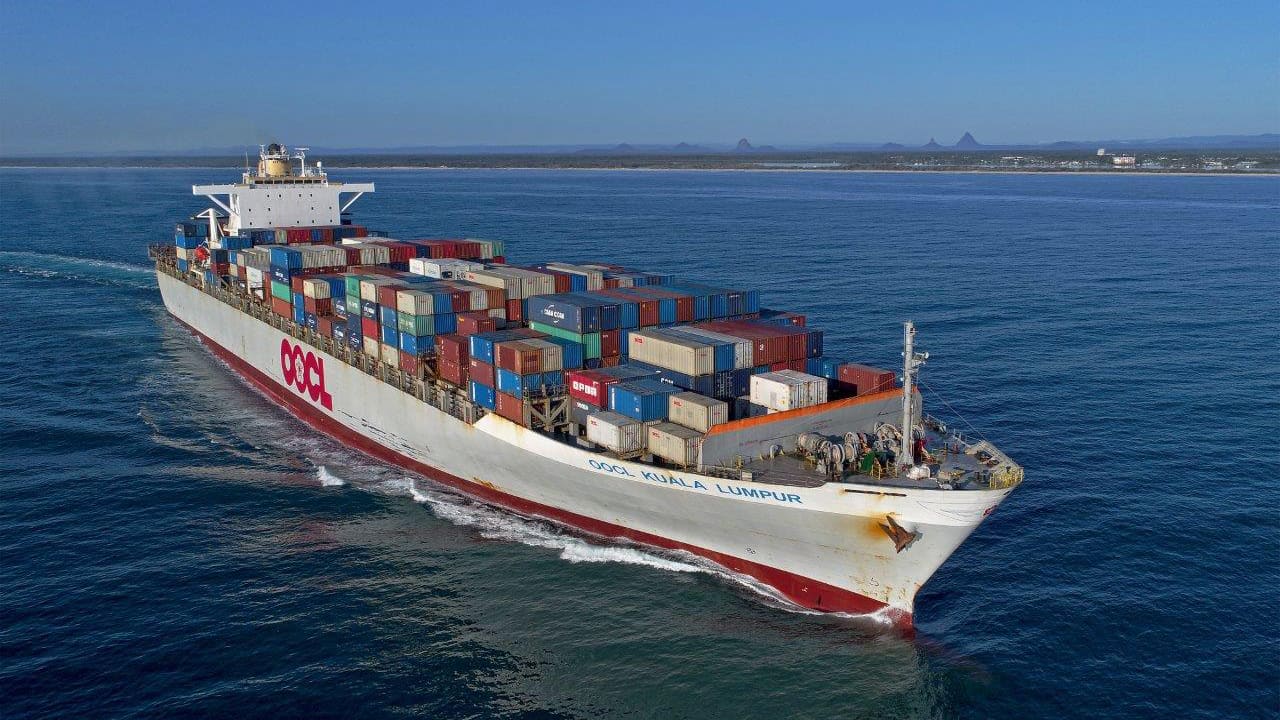Fatal Container Ship Accident: The Importance of Applying Safety Management Procedures

A container ship crew member became trapped between a ship’s elevator cage and a bulkhead
An ATSB accident investigation notes that the fatal injuries sustained by the container ship crew member who became trapped between the elevator cage and a bulkhead highlight the importance of applying existing safety management procedures.
The accident occurred when the electro-technical officer (ETO) of the OOCL Kuala Lumpur, which was preparing to enter Port Botany, Sydney, was testing the ship’s personnel elevator after completing mechanical repairs. While driving the elevator from the cage top, the ETO became trapped between the moving cage and the bulkhead, sustaining fatal injuries.
The ATSB investigation found that the ETO was last seen alone, on top of the elevator cage, in the prescribed safe zone with the elevator control in ‘MANUAL’. The exact circumstances as to how and why the ETO then came to be trapped while the elevator moved between floors could not be determined.
More than 10 fatal ship elevator accidents have been reported internationally since 2007.
However, for the accident to have occurred, the ETO had to have moved from the safe zone, the elevator control had to have been changed from ‘MANUAL’ to ‘AUTO’ and the elevator called.
The investigation also found that safety barriers prescribed in the electrical work permit were not put in place before the elevator maintenance work commenced. This included that there had been no warning announcement, and, consequently, all of the ship’s crew had not been warned against using the elevator. In addition to this, there were no warning signs posted at all elevator access doors.
This allowed an elevator call to be made while the work was underway.
“Elevator accidents continue to occur around the world and result in about one fatality per year,” said ATSB Director Transport Safety Stuart Macleod.
“Many of these accidents involve the failure to apply existing safety management procedures and/or identified safety barriers that have proven effective in reducing the risks associated with elevator maintenance.”
Further, the injured person was often working alone and riding the elevator cage, Mr. Macleod noted.
“For any task that is performed on multiple occasions without any adverse consequence, there is the potential for an individual’s perception of risk, or expectancy of a problem, to decrease,” Mr. Macleod said.
“This makes it all the more important to always follow documented procedures and safe working practices, even when the operation is considered safe.”
This container ship accident also highlights that it is imperative that close and careful supervision is maintained for any elevator testing and tasks
“Supervisory oversight provides an opportunity for experienced, senior technical staff to scrutinize and assess the plans and intentions of those completing the task. This provides an external check and safety barrier before, and during, the work.”
Source: ATSB; Read the investigation report: MO-2018-009: Fatality in the elevator trunk on board OOCL Kuala Lumpur, 8.5 nautical miles south-east of Port Botany on 3 June 2018.
Equipment reliability professionals need great troubleshooting and root cause analysis skills
Equipment reliability experts know a lot about equipment, but they usually don’t know about human factors. The TapRooT® Root Cause Analysis System will help guide equipment reliability experts to the root causes of equipment failures whether they are caused by mechanical failures or human errors.
Register for one of our Equifactor courses today or view our complete selection of courses.
Founded in 1988, the TapRooT® Root Cause Analysis System solves hurdles every investigator faces
TapRooT® Root Cause Analysis Training System takes an investigator beyond his or her knowledge to think outside the box. Backed with extensive research in human performance, incident investigation, and root cause analysis, TapRooT® is a global leader in improved investigation effectiveness and productivity, stopping finger-pointing and blame, improving equipment reliability, and fixing operating problems.

System Improvements, the creator of the TapRooT® System, has a team of investigators and instructors with years of extensive training ready to offer assistance worldwide.
TapRooT® Root Cause Analysis Training courses are taught all over the world
If you are interested in learning how to stop repeat incidents, find a 2-Day or 5-Day course; or view the complete selection of TapRooT® courses. We are available to train you and your staff on-site at your workplace; Contact us to discuss your needs. You may also call us at 865.539.2139 to discuss any questions you may have.



